#south saint paul
Text

Sao Paulo, BRAZIL
14 notes
·
View notes
Text

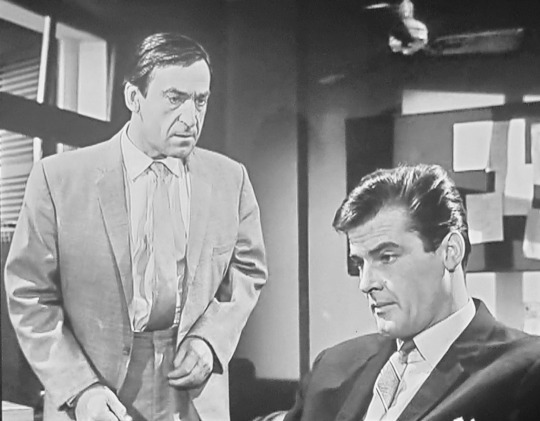

Patrick Troughton interrogates the Saint as an unnamed Buenos Aires police inspector (perhaps an ancestor of Ramón Salamander...?) in The Saint: The Romantic Matron (2.18, ITC, 1964)
#fave spotting#patrick troughton#the saint#doctor who#classic doctor who#two#the romantic matron#1964#itc#an unusually small role for Pat. he may not yet have been the household name he would become but he was certainly a well known tv actor#in 64. his starring role in the BBC's Paul of Tarsus in 1960 had brought him some acclaim and by this point he was often billed#as a 'guest star' in this kind of single episode appearance. here he only really gets two short scenes and his character has no real#definition beyond 'cop'. ho hum i guess it was a paycheck in the end. still he has some fun with a slightly wandering accent#regrettable tho it is for a white actor to be cast as a south american character‚ it's honestly difficult to tell if Pat is wearing makeup#(i mean beyond the dramatic eyeliner he'd also have as Salamander). he had a fairly dark complexion so may not have been in brown face#or maybe he was; John Carson is certainly in brown face for this episode‚ as he was in his previous Saint outing#it's a depressing element of old tv watching that it comes with content that we now appreciate to be unacceptable#these pics are bad too apologies for that. but i see Pat i make a little post thems the rules i guess
40 notes
·
View notes
Text
Plant Green Cleaning Services | Commercial Cleaning Service in South Saint Paul MN
We are your dependable and trustworthy go-to for a comprehensive Commercial cleaning service in South Saint Paul MN. With state-of-the-art equipment and effective cleaning solutions, we keep your workspace clean and healthy – leaving no corner unattended. From stained floors to grimy furniture, we clean everything in a detailed manner. Moreover, acquiring our exceptional Office cleaning service in South Saint Paul MN, can improve employee productivity and reduce health risks. Ensuring client satisfaction is what we prioritize the most; quality is never amiss in our services. Our service charges are also low for your ease. So, if you want to schedule our services, give us a call today.

#Commercial Cleaning Service in South Saint Paul MN#Office Cleaning Service in South Saint Paul MN#Residential Cleaning Services near me#Deep Cleaning Services near me#Carpet Cleaning near me
1 note
·
View note
Conversation
2022 New York Yankees Famous Relations
#68 Luke Bard: Brother of Colorado Rockies P Daniel Bard & cousin of St. Paul Saints OF John Andreoli.
#53 Zack Britton: Brother of Norfolk Tides manager Buck Britton & cousin of The Lance Britton Show host Lance Britton.
#45 Gerrit Cole: Brother-In-Law of San Francisco Giants SS Brandon Crawford.
#43 Jonathan Loáisiga: Son of former Montreal Expos prospect Stanley Loáisiga & brother of former DSL Dodgers 2B Mike Loáisiga.
#86 Clarke Schmidt: Brother of former Dayton Dragons P Clate Schmidt.
#12 Isiah Kiner-Falefa: 2nd cousin of former Cleveland Indians LF the late Ralph Kiner.
#22 Harrison Bader: Cousin of Vampire Weekend guitarist Chris Baio & actor Scott Baio.
#24 Matt Carpenter: Brother of former Salt Lake Bees P Tyler Carpenter.
#31 Aaron Hicks: Son of former Walla Walla Padres CF Joseph Hicks and fiancee of professional golfer Cheyenne Woods.
Manager Aaron Boone: Descendant of pioneer the late Daniel Boone, grandson of former Boston Red Sox SS the late Ray Boone, son of former Cincinnati Reds manager Bob Boone, nephew of former professional swimmer Terry Strandemo & former Iowa Oaks OF Rod Boone, brother of former Minnesota Twins 2B Bret Boone & former Dayton Dragons 3B Matt Boone and husband of model Laura Boone.
Bullpen coach Mike Harkey: Father of Buffalo Bills assistant coach Cory Harkey.
3B coach Luis Rojas-Alou: Son of former San Francisco Giants manager Felipe Alou, nephew of former Taiheiyo Kurabu Raionzu OF the late Maty Alou & former Houston Astros LF Jesús Alou, half-brother of former New York Mets RF Moisés Rojas-Alou, cousin of former Montreal Expos P Mel Rojas and 2nd cousin of Hanshin Taigāsu OF Mel Rojas; Jr..
#Sports#Baseball#MLB#New York Yankees#Celebrities#North Carolina#Colorado Rockies#Texas#MiLB#St. Paul Saints#Massachusetts#Norfolk Tides#San Francisco Giants#Nicaragua#Montreal Expos#Dominican Republic#Georgia#Dayton Dragons#South Carolina#Hawaii#Cleveland Indians#New Mexico#New York#Music#TV Shows#Movies#Salt Lake Bees#Washington#Golf#Arizona
0 notes
Text

Teresa Ann Bear Ribs nee Janis
B. May 17th 1959 in Pine Ridge, South Dakota
St. Paul, Minnesota
#Teresa Ann Bear Ribs#Teresa Ann Janis#Pine Ridge#Pine Ridge Reservation#South Dakota#Saint Paul#Minnesota#Oglala Lakota#Sioux#mother#wife#grandmother#beloved aunt and sister#may she rest in peace#<3
1 note
·
View note
Text
2369 South Saint Paul Street // $2,600,000
2369 South Saint Paul Street // $2,600,000

View On WordPress
0 notes
Text
Literally the second you step out of Minneapolis/St Paul the public transit goes to shit. West Saint Paul you're on thin fucking ice.
#p.s. why is there a West Saint Paul and a South Saint Paul#this isn't just neighborhoods or like general areas of Saint Paul proper. they're separate cities. get your own names.
1 note
·
View note
Text








we could run away
handle with care, jodi picoult // wheat field behind saint paul hospital, vincent van gogh // chasing cars, snow patrol // green wheat fields, auvers, vincent van gogh // no death, mirel wagner // letters to véra, vladimir nabokov // south from 77, seth tummins // this is how you lose the time war, amal el-mohtar
#lifesteal smp#yeahjaron#yeah jaron#planetlord#baconnwaffles0#lssmp#three heart trio#web weaving#web weave#vans webs#chasing cars plays 574 injured 8948 dead#insert that one photo of the wolf ripping its shirt off that’s how i feel when i think abt these dudes#oh god i think this has been in my drafts since they considered staying neutral in the apo team awesome war#<- took forever to find a photo that fit the vibe T_T
553 notes
·
View notes
Text
AKOM “Fine Tuning,” Episode 6: A prolonged jealousy
Another really excellent episode that I will have to listen to at least two more times to fully ingest, despite having lots of diffuse, unconnected notes where I ranted about most of the same text. They really backed up and gave it context and meaning, including adding a lot of things that I didn’t have and making sense of some of the extras that I did. It was both satisfying and frustrating: more satisfying than I expected, and my frustration feels more coherent and focused now.
I definitely think it’s one of the most important episodes.
There is only one point I would add, and that is just that when you listen to the episode it’s important to realize that Paul’s “jealousy” is the most egregiously non-sourced. There are basically two quotes that Mark Lewisohn uses to support this entire theme. The theme which he so beats into the ground that even if you don’t look at the footnotes it feels excessive.
I’ve mentioned before that when I read “Tune In” I was still very, very new to Beatles’ history. A newborn without any of the historiographical context, no understanding of the long, strange, John-deifying background, and therefore I wasn’t on the lookout for it. And that’s important because I went into the book with implicit trust, loved the writing, and still it was evident to me, fairly quickly, that I was reading an opinion column.

It was the cigarettes that did it
Paul’s care with money was noted—Pete says that while they all passed their ciggies around, Paul would “sneak one of his own to himself”—and he was still needling everyone about the Bambi sleeping arrangements, made all the worse now because he was jealous of Pete getting the best girls.
The second time I read the book I remember thinking, “Surely not that many people spontaneously bitched about Paul being stingy with cigarettes.” And that was my tipoff.
There are two quotes in the book about Paul and cigarettes that appear to be organic—one being Pete’s “sneak one of his own” quote in this episode—but you’d think that half the people Lewisohn talked to about their memories of some of the most famous people ever, and certainly the most famous from Liverpool, just magically thought that one of the most important things about these four guys was that Paul was stingy with cigarettes. And there is just no way that that is true.
But I also know how this works, inside out. You get “an angle” as a reporter. You have a story you want to tell, and then you interview people with that story—that angle—in mind. You ask questions that you think will elicit the responses that back up your thesis. And then, on the other side of the process, you filter the quotes you choose (and don’t choose) that tell the story you want to tell. And to be fair, every reporter and historian does this to some extent. It may just be to organize ideas in a coherent way, or it may be to focus on a theme. But it has also notoriously been used by historians to warp the truth and further a broader historical lie. (A very good example of this and the one closest to me is “the Dunning School” of the US Civil War and Reconstruction, the first real and condensed story of that conflict that injected into US historiography many complete lies, including the especially insane one that after the Civil War the “Radical Republicans” inflicted pain and humiliation on the South, which despite being the exact opposite of the truth is still the story most Americans “know.”)
Mark Lewisohn had a story he wanted to tell, and I believe that story is most obvious in his “jealous Paul” theme because it’s based on nearly thin air and even then is so ludicrously overblown. But I think it was just too tempting a canvas for Lewisohn. Setting up a dead, pretty kid as a sort of saint that Paul persecuted does so much work for everything else he wants to say about Paul, especially in the upcoming books. Hamburg becomes a pressure cooker where Paul’s true colors come out, and if Lewisohn can use Stu—a sort of perfect near-blank slate who never had time to put any of his memories into context—as a foil to Paul and to paint Paul as petty and jealous and seething, then all the rest of his work is easy. Stu is a layup that paves the way to seeing Paul as a bad guy. The concrete dries and everything else falls into place.
And look, there just is no way to see this theme as organic, because it’s not. It just isn’t. It’s not based on quotes or stories. There are a few completely disconnected quotes stretched to breaking that he uses to try to prop all this nonsense up with, but there is simply no defense for even 90% of the primary usage of them, and certainly not of the whole, big-picture story he creates with them.
I’m going to give one example—and there are many—but I admit to liking this one best because it’s all there in one passage based on one quote that doesn’t say any of this.
Passage:
But, as much as Paul liked exhibiting versatility, he was unhappy—he felt he’d been lumbered, that his multi-instrumental ability was tying him down. Who looked at the drummer? By rights, his place was out front, especially with his new guitar. Here he was, paying off the Solid 7 at ten bob a week and hardly getting to play it. Jealousy of Stu was stoked: Paul was in the back line while he remained out front (even if he was hiding and in dark glasses). One thing was for certain: Paul wasn’t going to abandon singing.
The only citation for all that Maca-inhabited resentment is the brief Paul quote already in the text, (FN35) and the next footnote—FN36—is from George on a new topid. There is no citation whatsoever to support any of Lewisohn’s finely-sketched fantasies of Paul’s vanity and jealousy.
FOOTNOTE 35: “I was drumming with my hands, playing the hi-hat and bass drum with my feet and I had a broomstick stuck between my thighs on the end of which was a little microphone, and I’m singing ‘Tell me what’d I say …’ It wasn’t easy!”
*Note: This quote is also in the text right under the ‘lumbered Paul wanted to be out front’ passage, so in some ways it’s an even thinner spread, if that’s possible.
So, according to Lewisohn:
Paul liked “exhibiting versatility” (a whole lot because of the modifier “as much as”)
Paul was unhappy because he felt “lumbered”
He felt he was being punished because he was TOO TALENTED
BY RIGHTS his place was out FRONT
He wanted to be LOOKED AT!
Jealousy of Stu is grabbed from thin air, based on nothing, and “stoked” by Lewisohn.
because, again, Stu was out FRONT
Did you catch the point that Paul is CHEAP?
Again, all of that is cited to this:
“I was drumming with my hands, playing the hi-hat and bass drum with my feet and I had a broomstick stuck between my thighs on the end of which was a little microphone, and I’m singing ‘Tell me what’d I say …’ It wasn’t easy!”
There are at least two more things that I want to say but this is long enough so I will put them off. (Hopefully not for long.) ✌🏻
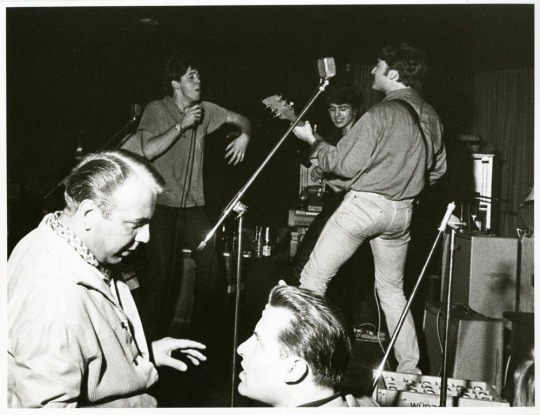
#the beatles#akom#beatles#fine tuning#tune in#paul mccartney#john lennon#lewisohn#jealous paul#cherry picking#mark lewisohn#Spotify
103 notes
·
View notes
Text
I would do this all as one reblog chain but I don't have that as an option because you can't add polls in reblogs so, let's design an amtrak route connecting the midwest to the south
66 notes
·
View notes
Photo
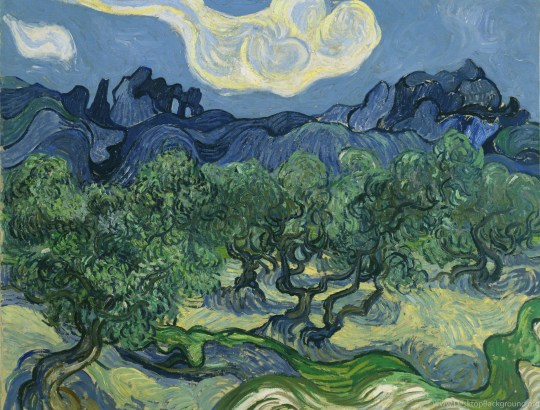
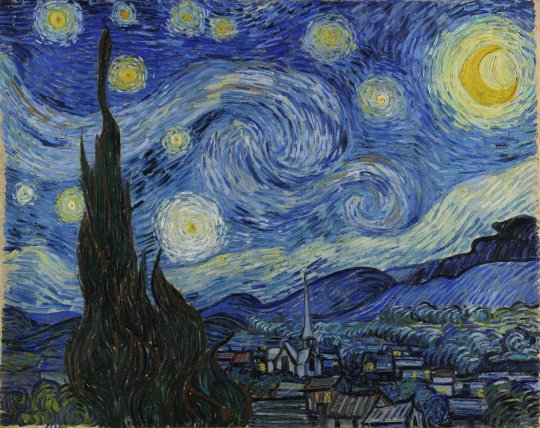
Vincent van Gogh ~ The Olive Trees, 1889 / The Starry Night, 1889
“ After van Gogh voluntarily entered the asylum at Saint-Rémy in the south of France in the spring of 1889, he wrote his brother Theo: "I did a landscape with olive trees and also a new study of a starry sky." Later, when the pictures had dried, he sent both of them to Theo in Paris, noting: "The olive trees with the white cloud and the mountains behind, as well as the rise of the moon and the night effect, are exaggerations from the point of view of the general arrangement; the outlines are accentuated as in some old woodcuts."
Van Gogh's letters make it clear that he created this particular intense vista of the southern French landscape as a daylight partner to the visionary nocturne of his more famous canvas, The Starry Night. He felt that both pictures showed, in complementary ways, the principles he shared with his fellow painter Paul Gauguin, regarding the freedom of the artist to go beyond "the photographic and silly perfection of some painters" and intensify the experience of color and linear rhythms.”
https://www.moma.org/collection/works/80013
172 notes
·
View notes
Photo



600-Year-Old English Gold Coin Found in Newfoundland
The discovery of a rare gold coin on the south coast of Newfoundland, Canada, may challenge traditional historical narratives about the timing of European contact in the region, as it predates explorer John Cabot's arrival on the island by at least 70 years.
In a press release last week, the Government of Newfoundland and Labrador said that the English coin was found during the summer of 2022 by Edward Hynes, a local amateur historian, who reported it to officials as required under the province's Historic Resources Act. The 600-year-old coin predates the first documented European contact with North America since the Vikings, in a region with a 9,000-year-old history of human settlement and rich Indigenous traditions.
After consultation with Paul Berry, a former curator of the Bank of Canada's Currency Museum, the coin was identified as a Henry VI quarter noble, minted in London between 1422 and 1427. In the 1400s, the coin would have represented a significant sum of money, valued at 1 shilling 8 pence, or around 81 Canadian dollars ($61) today.
Prior to this discovery, a coin minted in the 1490s and found in 2021 at the province's Cupids Cove Plantation Provincial Historic Site was considered the oldest English coin ever found in Canada.
As Berry says that the coin was likely out of circulation when it was lost, there is much speculation about exactly how the gold quarter noble coin made its way to Newfoundland and Labrador. The precise location of the discovery is being kept secret to discourage treasure hunters.
The discovery of the coin underscores the intriguing archaeological record in Newfoundland and Labrador, Canada's easternmost province. Stories of Viking arrival are contained in Icelandic sagas, citing visits by Leif Erikson over 1,000 years ago, and archaeological evidence of a Norse settlement, which was found in L'Anse aux Meadows, Newfoundland, and declared a Unesco World Heritage site in 1978.
Other unconfirmed accounts of European contact include tales from England's Channel Islands about a ship being blown off course in the late 15th century into a strange land full of fish; historical Portuguese maps depicting Terra do Bacalhau (or, the land of codfish); and the "Voyage of Saint Brendan," a legendary account of an early 6th-century sea voyage by an Irish abbot.
In 1583, Newfoundland became England's first possession in North America and the establishment of fishing operations on the outer coastline of the island cut off access to traditional food sources for the indigenous population.
"There's been some knowledge of a pre-16th century European presence here for a while, you know, excluding Norse and so on," Brake told CBC. "The possibility of perhaps a pre-16th century occupation would be pretty amazing and highly significant in this part of the world."
#600-Year-Old English Gold Coin Found in Newfoundland#Edward Hynes#metal detector#metal detecting finds#archeology#archeolgst#gold#gold coin#Henry VI quarter noble#treasure#ancient artifacts#history#history news#ancient history#ancient culture#ancient civilizations
196 notes
·
View notes
Text
WIND.S (French Folks Traditions)
By observing the wind at certain times, we can know which one will dominate during the year. In this area, the Palm Sunday wind is the most widespread indicator, but it is not the only one.
In Côte d'Or, it is the one that blows during the Elevation of the mass of the first Sunday of Lent, unless it is "corrected" by that of Palm Sunday.
Often, the personified winds also engage in battle.
In the Marne, according to tradition the winds begin to fight on the day of the Conversion of Saint Paul (January 25) and cease their fight on Saint Blaise (February 3). The wind that wins the victory will be the one that blows that day: it will dominate throughout the year.
In the Vosges, it is said that the four winds fight at the Conversion of Saint Paul and that the first to blow at sunrise will be the dominant wind of the year to come.
Each region being exposed to different winds, beliefs often crystallize on those that farmers observe at home.
For example, in Puy-de-Dôme, the east wind is only supposed to blow very rarely and not for more than three hours at a time.
A woman from the Gospel of the Cattails (15th century) declares that in Savoy, to ward off a storm, you must make a fire with four oak sticks crossed in the wind and draw a cross on them. (a lot of crosses, definitely.)
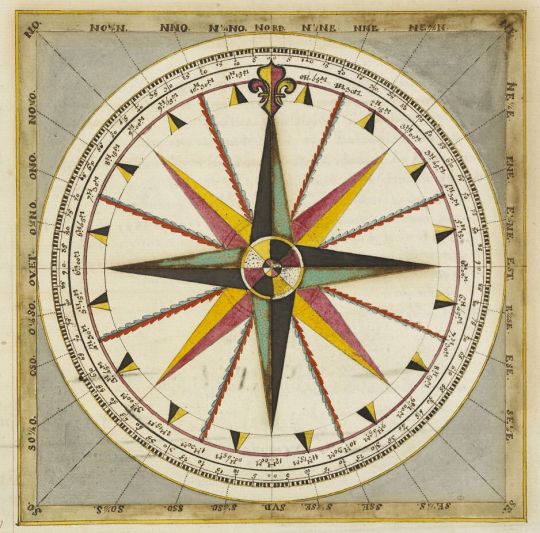
Marine winds :
In Finistère it is usual to clean a chapel which will be chosen and to pour the collected dust in the direction of the wind that we want to see blow.
In the 16th century, the sorcerers' wind ropes were mentioned, which had three enchanted knots. The first to be unknot gets a gentle wind. The second a strong wind and the third, a storm.
Often, Saint Anthony is invoked with insults when the sea is calm, or the moss of the boats must whip each other to bring in the winds.
-
Omens :
Still in the Gospel of the Cattail it is also said that when "you hear a strong wind, know that it is a sign of betrayal, or bad news."
In certain regions (Brittany) high winds are signs of misfortune, but in others (Berry) of prolific harvests. "Year of high wind - Year of wheat".
In many places in central France, there is fear of the wind on August 9, which can destroy crops overnight.
In the Vosges, we fear the wind at night from January 11 to 12. If it comes from the East, the animals will die. If he comes from the South, the house will be full of sick people. If he comes from the West, there will be war, and if he comes from the North, the fields will be barren.

Gusts of Wind and Whirlwind :
In many places in France, Whirlwinds are a "bad" omen : either the Devil pursues a soul; either certain People of the Little People pursue several; either it is the souls of the damned who wander and seek to harm men; (etc)
Sometimes, even Sorcerers can find themselves caught in it against their will for not having obeyed the Demon's orders.
In most cases, to free those who are under the influence of such winds, it is necessary to plant a knife with a curved blade in the center of the whirlwind. Sometimes it is a fork; in all cases it must be a metal and sharp object. Often it is necessary to pronounce consecrated formulas and command the “Follet” to go away.
-
[Excerpts arranged by me from Sebillot & M.C Delmas.]
[pics @Pinterest]
16 notes
·
View notes
Text

Teresa Ann Bear Ribs nee Janis
B. May 17th 1959 in Pine Ridge, South Dakota
St. Paul, Minnesota
#Teresa Ann Bear Ribs#Teresa Ann Janis#Pine Ridge#Pine Ridge Reservation#South Dakota#Saint Paul#Minnesota#Oglala Lakota#Sioux#mother#wife#grandmother#beloved aunt and sister#may she rest in peace#<3
1 note
·
View note
Text

2023 festival tour masterlist
the show: live on tour 2024 masterlist
europe leg |:
belfast n1 (feb 20) berlin (mar 11)
belfast n2 (feb 21) kobenhavn (mar 12)
dublin n1 (feb 23) oslo (mar 14)
dublin n2 (feb 24) stockholm (mar 15)
dublin n3 (feb 25) královské vinohrady (mar 17)
birmingham (feb 27) łódź (mar 18)
glasgow (feb 28) münchen (mar 20)
london n1 (mar 1) assago (mar 21)
cardiff (mar 4) madrid (mar 23)
manchester n1 (mar 5) dusseldorf (mar 26)
antwerp (mar 7) amsterdam n1 (mar 27)
paris (mar 8) amsterdam n2 (mar 28)
australia leg |:
auckland (apr 26) brisbane (apr 28) sydney (may 1)
melbourne n1 (may 3) melbourne n2 (may 4)
asia leg |:
singapore (may 9)
jakarta, indonesia (may 11)
manila, philippines (may 13)
koto city, tokyo (may 15)
north america leg:
hollywood, fl (may 29) toronto n2 (jun 29)
tampa, fl (may 31) saint paul, mn (jul 7)
alpharetta, georgia (jun 1) tinley park, il (jul 9)
nashville, tn (jun 3) clarkston, mi (jul 10)
charlotte, nc (jun 5) maryland heights, mo (jul 12)
raleigh, nc (jun 7) noblesville, in (jul13)
bristow, va (jun 8) kansas city, mo (jul 16)
philadelphia, pa (jun 11) rogers, ar (jul 17)
new york, ny n1 (jun 13) denver, co (jul 19)
new york, ny n2 (jun 14) salt lake city, ut (jul 20)
mansfield, ma (jun 15) auburn, wa (jul 23)
bridgeport, ct (jun 18) ridgefield, wa (jul 24)
bangor, me (jun 19) mountain view, ca (jul 26)
saratoga springs, ny (jun 21) inglewood, ca n1 (jul 27)
buffalo, ny (jun 22) inglewood, ca n2 (jul 28)
cincinatti, oh (jun 25) chula vista, ca (jul 30)
cuyahoga falls, oh (jun 26) phoenix, az (jul 31)
toronto n1 (jun 28) dallas, tx (aug 2) austin, tx (aug 3)
europe leg ||:
dublin n4 (aug 23)
dublin n5 (aug 24)
manchester n2 (aug 27)
leeds (aug 28)
newcastle (aug 30)
aberdeen (aug 31)
london n2 (sep 3)
south america leg:
mexico city (sep 20)
guadalajara (sep 23)
monterrey (sep 25)
são paulo (sep 28)
rio de janeiro (sep 29)
buenos aires (oct 2)
santiago (oct 4)
lima (oct 6)
bogota (oct 9)
#niall horan#john bird#jake curran#emily kohavi#dani mcginley#alex torjussen#louis querelle#the show#the show live on tour#tslot#the show tour#niall the show#niall horan the show
28 notes
·
View notes
Text
Today we venerate Ancestor Bishop C.H. Mason on his 157th birthday 🎉
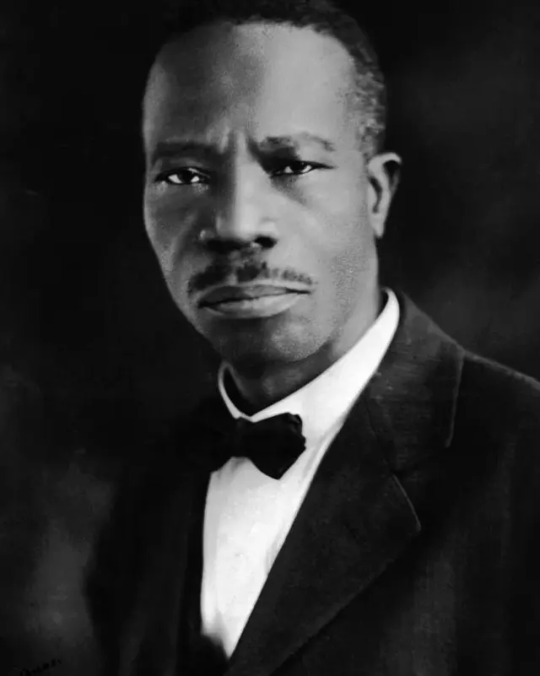
Bishop C.H. Mason founded the Church of God in Christ (COGIC), THE largest Black American pentecostal church in the U.S. In doing so, he preserved and cultivated the religious culturesof our Afrikan ancestors while fighting for ourreligious freedom of expression and integration in the church house.
Brother Mason born to former slaves in Shelby County, TN. Due to his family's impoverished status, young Mason worked as a sharecropper and did not receive a formal education. Yet he still learned how to read and write. As a child, Mason was greatly influenced by the religion of his parents and other former slaves. He admired their prayer rituals, spontaneous singing, & shouting. At age 12, he embraced the Afro-Baptist faith and was later baptized in his older brother’s church.
In 1895, Brother Mason met Charles Price Jones, a popular Baptist preacher from Mississippi. Mason and Jones started preaching the doctrine of holiness and sanctification together in local Baptist churches, which led to their expulsion from the Baptist & Methodist churches. They, and others, established the Church of God and Church of Christ. Their movement consisted of both Black and White folk were grossly dissatisfied with mainstream denominations. From COGIC’s inception, Brother Mason ordained and allowed whites to join his denomination. He dreamed of an integrated church and believed that all races were entitled to equal rights and authority therein. Their principal belief was that being sanctified was an internal experience that resulted in external changes within individuals & their communities. They taught their followers to seek higher spiritual development and encouraged them to rekindle the dynamism of "slave religion".
In 1897, Brother Mason established St. Paul COGIC in an old cotton gin located in Lexington, Mississippi. He then started using the name “Church of God in Christ”, because, "God told him that if he used that name it would cause people to follow him". By 1904, Brother Mason established pastoring 4 churches: St. Paul in Lexington, Saints Home and Dyson Street in Memphis, and a COGIC church in Conway, AR.
In 1907, he attended an interracial service in Los Angeles, CA. After which, he declared that he'd experienced a spiritual metamorphosis and that he now believed in speaking in tongues. This is what spurred Jones and others to excommunicate him from their Holiness association. This ultimately led to Brother Mason and Jones’s 12yr partnership ending over theological differences, rights to church properties, ecclesiastical power, and the COGIC name itself. After 3 years of legal battles, in 1911, Mason’s legal victories catapulted him into historical prominence and placed COGIC in the Mid-South’s religious pantheon.
Brother Mason was also an outspoken conscientious objector. He was arrested in 1918 and probed by the FBI for teaching pacifism and encouraging Brothas to refuse being drafted into WW I and II.
By the early 20th century, the Black Christian middle class frowned upon any & everything associated with Mother Africa. They believed shouting, dancing, & especially speaking in tongues, were shameful & hindered Black progress. Defiantly, Brother bMason encouraged his followers to embrace their Afrikan heritage and gave them space to express themselves in church. He allowed the working classes to dance shout, testify, speak in tongues, string musical instruments, & sing gospel. His preservation of the Afrikan heritage, freedom of religious expression, & leadership spearheaded COGIC’s astronomical growth.
In the 1920s, COGIC had 30K members &, as a result of the Great Migration, 68.7% percent worshiped in urban cities. By the 1930s, COGIC was an urban phenomenon. During the Great Depression, Brother Mason’s churches fed and clothed poor Whites and Black Peoples across Memphis
Today, it has an estimated 6.5 million members and 12,000 congregations. COGIC is the largest African American denomination in the United States, with eight million members worldwide.
We pour libations & give him💐 today as we celebrate him for his passion & commitment to the preservation & cultivation of our Central/West Afrikan cosmologies, cultures, & belief systems via our religious of expression.
‼️Note: offering suggestions are just that & strictly for veneration purposes only. Never attempt to conjure up any spirit or entity without proper divination/Mediumship counsel.‼️
Offering suggestions: COGIC bible/prayer offerings, water libations, gospel songs of praise/dance
.
.
.
#hoodooheritage #ATR #ATRs #hoodootradition #TheHoodooCalendar #ancestors #veneration #theblackchurch #ancestorveneration #bishopchmason #cogic #cogicchurch #og #deepsouth
#bishop ch mason#cogic#cogicchurch#black America#black Christians#ancestor elevation#ancestor#hoodoo#hoodoos#atr#the hoodoo calendar#atrs#conjure
23 notes
·
View notes